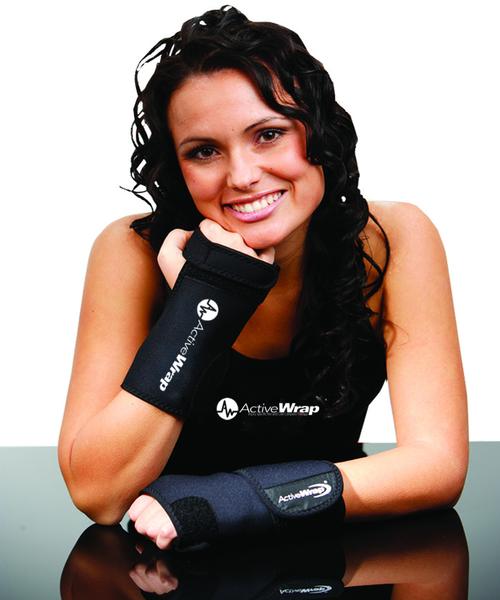
Carpal Tunnel Syndrome- What it is and Ways It Can Be Treated.
Share
Carpal Tunnel Syndrome often referred to as CTS occurs when the median nerve is compressed under the flexor retinaculum at the wrist. (See attached drawing).

This compression may be caused by trauma (such as a fracture or dislocation) however conditions such as arthritis, collagen disease, a ganglion or flexor tendon tenosynovitis can trigger the syndrome. Carpal Tunnel Syndrome (CTS) is most prevalent in women between the ages of 40 and 60 years of age. As many as 20% of pregnant women experience median nerve symptoms, because of fluid retention during pregnancy which can reduce the space inside the carpal tunnel resulting in compression of the nerve.
With Carpal Tunnel Syndrome, the pain, tingling, burning, and or numbness are typically worse at end of the day/nighttime. CTS can occur bilaterally in some but it’s typically most seen in the dominant hand. There are many CTS causes. Individuals who rely on their hands for repetitive motion or are exposed to excessive vibration whether in sports, work, or hobby are also strong candidates for Carpal Tunnel. Often associated as an office computer injury due improper desk ergonomics, CTS hits its fair share of musicians (guitarists, horn players & drummers), and assembly line workers. The fact is, according to the National Institute of Neurological Disorders, more assembly line workers (sewing, finishing, cleaning, cutting) suffer from CTS symptoms than computer typing desk jockeys. Three times as many to be exact. Basically, repetitive hand motions is one of the main CTS causes.
Some common tests for nerve disfunction that your doctor or therapist may perform include but certainly not limited to include Tinel’s Sign and Phalen’s test. In the video below, the examiner taps over the carpal tunnel at the wrist. If the test is positive, the test will produce tingling/pins and needles distal to the point of contact, into the thumb ,index finger and middle and lateral half of the ring finger. Tinel’s sign at the wrist is indicative of Carpal Tunnel.
The Phalen’s test in the picture below is where the examiner flexes the wrists full range and holds the position for 60 seconds. A positive test produces tingling into the same areas as a Tinel’s test. If this test is positive it is also an indicator of CTS.
A positive Carpal Compression Test is also an indicator of CTS. In this test the examiner holds the supinated wrist in both hands and applies direct pressure over the median nerve (in the carpal tunnel) for up to 30 seconds. If this test produces the patients symptoms it is considered positive for CTS.
Treatment Strategies For Carpal Tunnel
Non Surgical Remedies for Carpal Tunnel Pain
There are many non-surgical remedies for Carpal Tunnel pain. These include reduction of repetitive motions that elicit CTS symptoms. In addition, work place assessment by a certified physical therapist to make sure proper ergonomics are in place to reduce common CTS causes. Aside from that, the use of a splint at night on the wrist is common, application of a cold ice wrap to reduce pain and inflammation and over the counter NSAIDS (ibuprofen). ActiveWrap has made the use of cold simple, no mess and effective. The ActiveWrap wrist ice compression wrap serves as a mild splint and cold compress all in one, relieving some of the worst CTS symptoms. It can be used on either left or right hand as well. The ice pack can be placed on the palmar side of the hand and mold to keep the hand in a functional position. And remember to learn how to use an ice pack properly to avoid further injury.

Shake, stretch, and spider exercises are also easy home remedies for carpal tunnel pain. Shaking your hands out at night at the side of your bed, stretching your wrists (in flexion) and doing "spider pushups on a mirror" (see picture below) all can provide relief from CTS symptoms like tingling and "pins and needles."
Surgical Remedies for Carpal Tunnel Pain
Carpal tunnel release is one of the most common surgical procedures in the United States. Surgery typically is outpatient. Following surgery, the ligaments usually grow back together and allow more space than before. Although symptoms may be relieved immediately after surgery, full recovery from carpal tunnel surgery can take months and proper hand therapy, as well as reducing common CTS causes like repetitive hand motions, is important. Almost always there is a decrease in grip strength, which improves over time and with therapeutic exercise. Most people need to modify work activity for several weeks following surgery, and some people may need to adjust job duties or even change jobs after recovery from surgery.
The above information is not intended to substitute a professional physical diagnosis by a board certified doctor, physical or occupational therapist.
